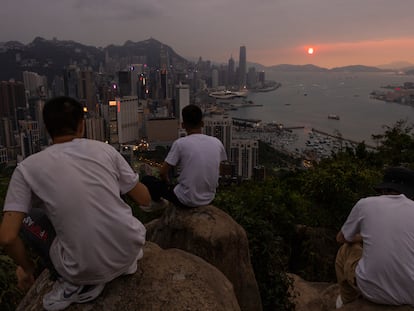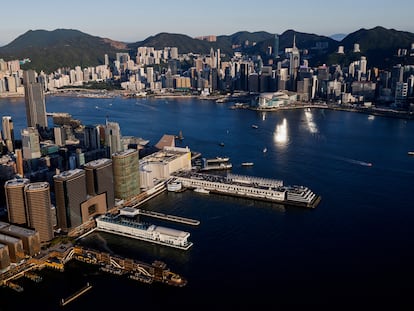Artistic Hong Kong: From the colossal M+ to skyscraper galleries
The city offers a cosmopolitan and open-minded tradition and, with the opening of new spaces dedicated to art, it seeks to carve out a niche for itself among travelers planning a cultural trip through vibrant Southeast Asia
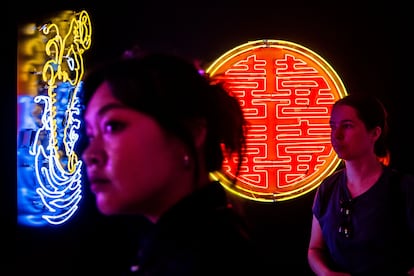
The pandemic years hit Hong Kong especially hard. It is a cosmopolitan and open city, the crossroads of Asia and the West’s traditional port of entry to China and the entire Asian continent. But this spring it held — and set records for attendance and sales at — the Art Basel Hong Kong fair (a colossus of the contemporary art market, which continues to invest in the city as one of its three world venues, at the immense Convention and Exhibition Centre) and the public opening of the M+, the colossal art center designed by the Herzog & De Meuron studio. Both of these events are very clear signs that the former British colony and heart of the Chinese economy is making a strong comeback, as well as a positive impression on travelers planning a cultural tour of vibrant Southeast Asia.
Using the word “colossal” in China is really saying something: half of the world’s population is less than five hours away from M+ by plane, and its scale and programming are equal to those figures. M+ is dedicated to contemporary visual culture and is the flagship initiative of a long-term project that seeks to make Hong Kong a major cultural hub throughout Asia. The museum is located on the waterfront in Kowloon (the mainland part), and the best way to reach it from the island is to take the legendary Star Ferry, which has been crossing the bay for over a hundred years: just buy a (very cheap) ticket at the ticket office and follow the orderly crowds that occupy their seats after sitting down in the direction of travel with the loud and unison clack sound of the adjustable backrests on the boat’s large benches.
Behind you is the impressive skyline of the skyscrapers of Central, the island’s financial district. Across from you is the great rectangular mass of the M+, designed to function as a giant LED screen onto which audiovisual works by specially commissioned international artists are projected at dusk (during my visit, there were hypnotic, gigantic colorful hands by Swiss visual artist Pipilotti Rist). A large park surrounds the building, with bleachers that afford views of the other side of the bay, while inside it there are gigantic exhibition halls, auditoriums, library and a restaurant — the ADD+ — with breathtaking views.
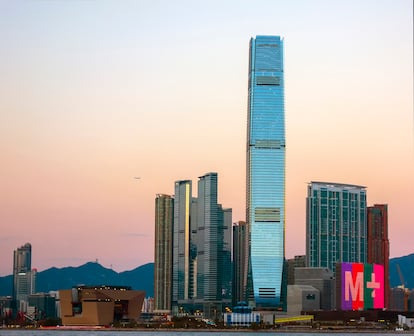
The West Kowloon district is the city’s new cultural hotspot, where one can find the futuristic XiQu Centre, which is dedicated to reviving and preserving the fascinating repertoire of traditional Cantonese opera (it’s well worth getting tickets to some of the performances in the main hall or chamber hall); the K11, a large space that resembles European kunsthalles and focuses especially on the latest local art; and the Hong Kong Palace Museum, linked to the museum in Beijing, features rotating exhibits of classical art that come from the Chinese capital’s fabulous funds. To end the day (without crossing back to the island), do not miss out on taking a walk at dusk along the Tsim Sha Tsui promenade; then, take a seat in the stands, alongside locals and tourists from all over China, for the free sound and light show: at 8 p.m. there’s a colossal (again) show of choreographed images and music that use the facades of the skyscrapers on the opposite shore as screens. You don’t have to be a fan of this type of show to be overwhelmed by the sheer power of the spectacle.
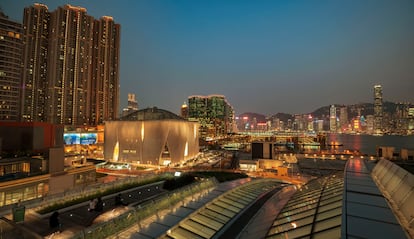
Back on the island, new cultural spaces and private galleries are opening in a rapidly changing city. In the Central area, the Tai Kwun complex, built around what was once the colonial-era central police station, has become Hong Kong’s new crown jewel. Around it, the architectural firm Herzog & De Meuron was tasked with building a new complex of exhibition halls, theaters and auditoriums; it also has space for private galleries, such as the pioneering Ora Ora, which is a good place to see quality contemporary Asian art. This is a good spot to start a tour of the city’s other world-renowned galleries, such as Gagosian, Hauser & Wirth and White Cube. In a city where every square meter is worth gold, many of the galleries are clustered in mini-skyscrapers that specialize in the field, such as the Pedder Building and the brand-new H Queens. It’s advisable to take the elevator up to the building’s rooftop and then walk down to browse the exhibitions of the different galleries located on private floors; it’s a different (and vertical) version of the gallery-hopping that occurs in other Western cities like New York, London and Berlin.
There are also independent art spaces like Videotage, which is dedicated mainly to video art, and Para Site, which has excellent temporary exhibits in the Quarry Bay district.
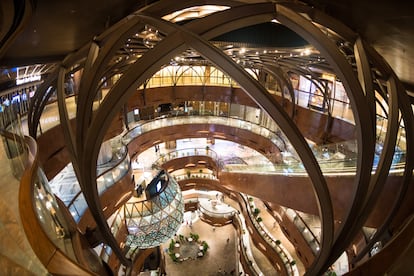
In a city as densely populated as Hong Kong, one occasionally craves some fresh air and greenery. Such spaces can be found in the gardens and serene contemporary spaces of the Asia Society, which is built on terraces that take advantage of the British Army’s former gun powder magazines and ammunition stores from colonial times. The mix of old colonial buildings and contemporary architecture, exhibition halls and gardens on different levels and views of the forest of skyscrapers from the windows of its elegant Ammo restaurant are emblematic of Hong Kong’s ability to reinvent itself and combine the traditional with the futuristic. It’s a world-class city that is not content to only be China’s financial and economic center, and it is quickly carving out a niche for itself on the global art circuit.
Sign up for our weekly newsletter to get more English-language news coverage from EL PAÍS USA Edition
Tu suscripción se está usando en otro dispositivo
¿Quieres añadir otro usuario a tu suscripción?
Si continúas leyendo en este dispositivo, no se podrá leer en el otro.
FlechaTu suscripción se está usando en otro dispositivo y solo puedes acceder a EL PAÍS desde un dispositivo a la vez.
Si quieres compartir tu cuenta, cambia tu suscripción a la modalidad Premium, así podrás añadir otro usuario. Cada uno accederá con su propia cuenta de email, lo que os permitirá personalizar vuestra experiencia en EL PAÍS.
¿Tienes una suscripción de empresa? Accede aquí para contratar más cuentas.
En el caso de no saber quién está usando tu cuenta, te recomendamos cambiar tu contraseña aquí.
Si decides continuar compartiendo tu cuenta, este mensaje se mostrará en tu dispositivo y en el de la otra persona que está usando tu cuenta de forma indefinida, afectando a tu experiencia de lectura. Puedes consultar aquí los términos y condiciones de la suscripción digital.
More information
Archived In
Últimas noticias
Most viewed
- Reinhard Genzel, Nobel laureate in physics: ‘One-minute videos will never give you the truth’
- Oona Chaplin: ‘I told James Cameron that I was living in a treehouse and starting a permaculture project with a friend’
- Pablo Escobar’s hippos: A serious environmental problem, 40 years on
- Charles Dubouloz, mountaineering star, retires at 36 with a farewell tour inspired by Walter Bonatti
- Why we lost the habit of sleeping in two segments and how that changed our sense of time

